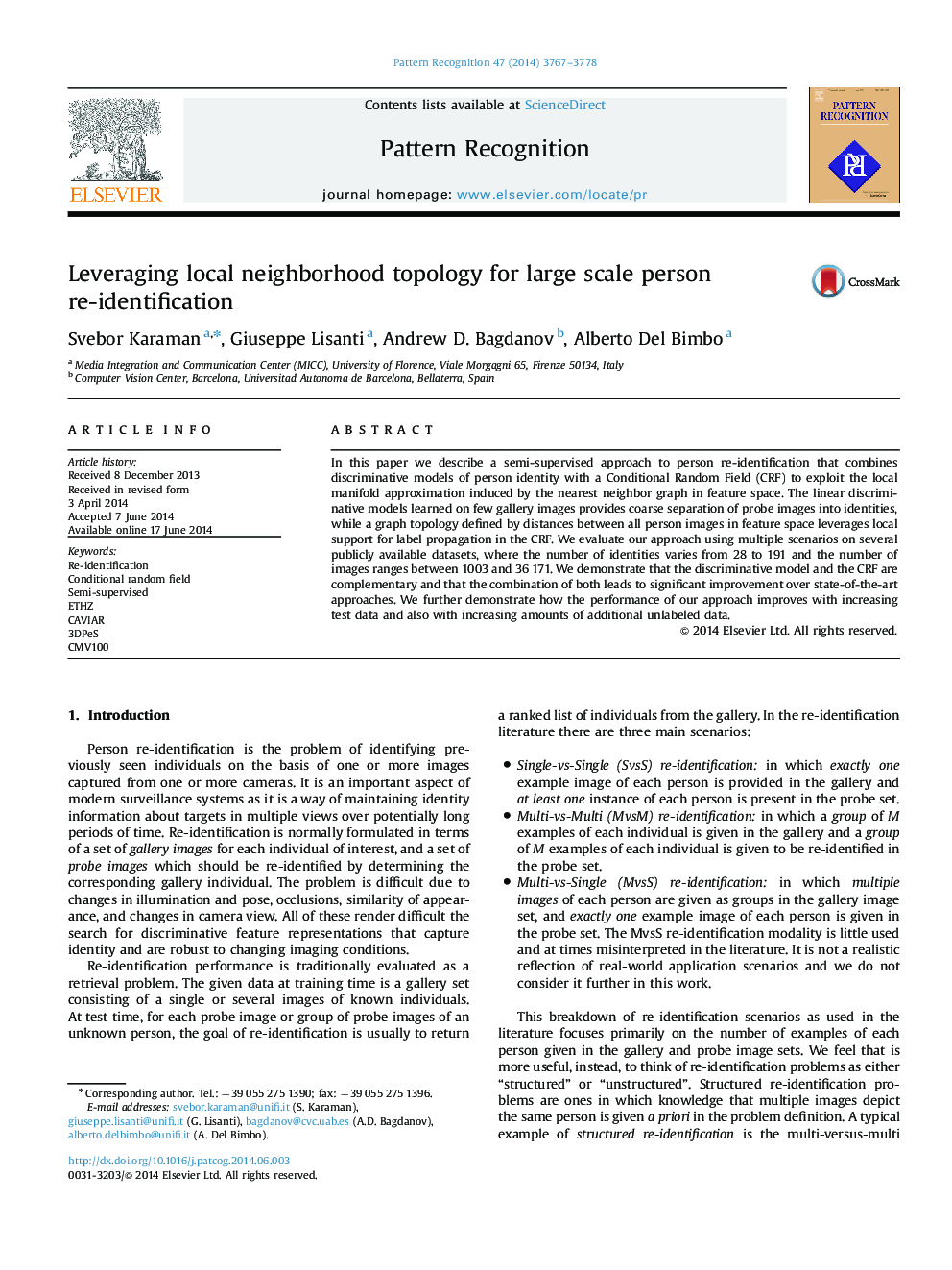| Article ID | Journal | Published Year | Pages | File Type |
|---|---|---|---|---|
| 530332 | Pattern Recognition | 2014 | 12 Pages |
•Semi-supervised approach that leverages all available imagery for re-identification.•Brings the advantages of structured re-identification to unstructured problems.•State-of-the-art performance on standard datasets.•Results on re-identification problems with more than 30 000 images.•Performance improves with more images, unlike other techniques.
In this paper we describe a semi-supervised approach to person re-identification that combines discriminative models of person identity with a Conditional Random Field (CRF) to exploit the local manifold approximation induced by the nearest neighbor graph in feature space. The linear discriminative models learned on few gallery images provides coarse separation of probe images into identities, while a graph topology defined by distances between all person images in feature space leverages local support for label propagation in the CRF. We evaluate our approach using multiple scenarios on several publicly available datasets, where the number of identities varies from 28 to 191 and the number of images ranges between 1003 and 36 171. We demonstrate that the discriminative model and the CRF are complementary and that the combination of both leads to significant improvement over state-of-the-art approaches. We further demonstrate how the performance of our approach improves with increasing test data and also with increasing amounts of additional unlabeled data.
